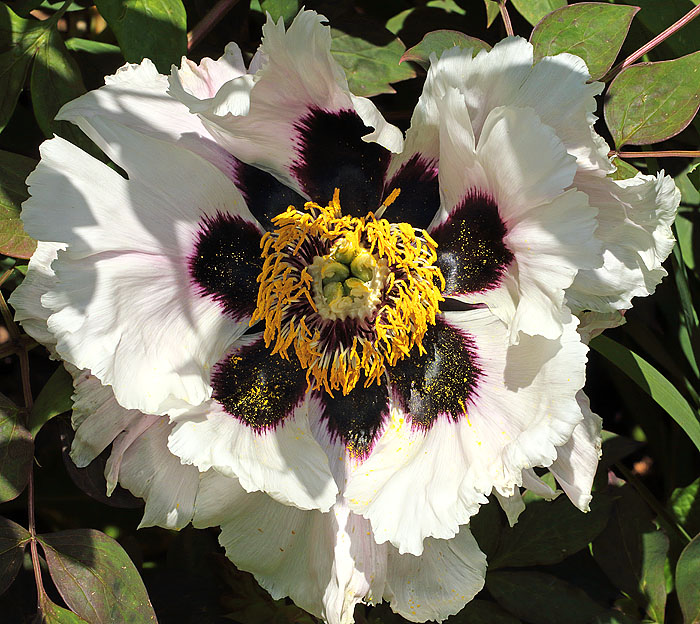Hello Bernd.
I donated seed of
Paeonia rockii from a plant raised from JJA 4.581.500 seed. The details are long lost from the label but I think I bought the seed from the Archibald’s January 1997 seed list. My plant seems to be self-fertile. I also grow Paeonia delavayi and delavayi var. lutea in my garden though they flower earlier than rockii. Apparently some of the plants raised from JJA4581.500 did not have the maroon blotch in the flower, my plant does (image below). Hopefully it will come true from seed .....and if so you will have one of the most beautiful of all Paeonies.
Here are the original details from the Archibald seed list:
“4.581.500 : PAEONIA SUFFRUTICOSA subsp. ROCKII (P. rockii, P. s. 'Rocks Variety') No intelligible data. Wild-collected Chinese seed of this mythical tree-peony but do not hold your breath - one Australian grower has already flowered a seedling from seed sown in 1996 (how do these people do this so quickly ?) and there was no blotch on the flowers. We suspect that as with so many species, the wild colonies are variable and the maroon blotch may not be a consistent feature in all individuals. The introduction to western gardens was made by Joseph Rock with seed collected in 1925 from plants cultivated at the Choni lamasery in Gansu at 2600m., where it had first been seen by Farrer, but it has since been recorded growing wild in several remote areas of Gansu, Shaanxi & Hubei.. As the origins of our western garden plants were Chinese cultivated plants, we may well be best to return to the same source for a reintroduction. The maroon-blotched, white tree-peony is still cultivated in China, where it is known simply as the Gansu tree-peony - Gansu Mudan. We shall almost certainly be able to do as well as Rock & better than Farrer by listing 1998 cultivated seed of this from Gansu next winter. In the meantime, while we can be reasonably confident the wild seed will produce huge flowers "refulgent as pure snow and fragrant as heavenly roseswith a heart of gold", as described by Farrer, we cannot guarantee " each stainless petal flamed at the base with a clean and definite feathered blotch of maroon." A recent account of the members of the group,beautifully illustrated with photographs & paintings, by G.L. Osti is in 'The New Plantsman' (Vol. 1, Part 4, Dec. 1994)”



